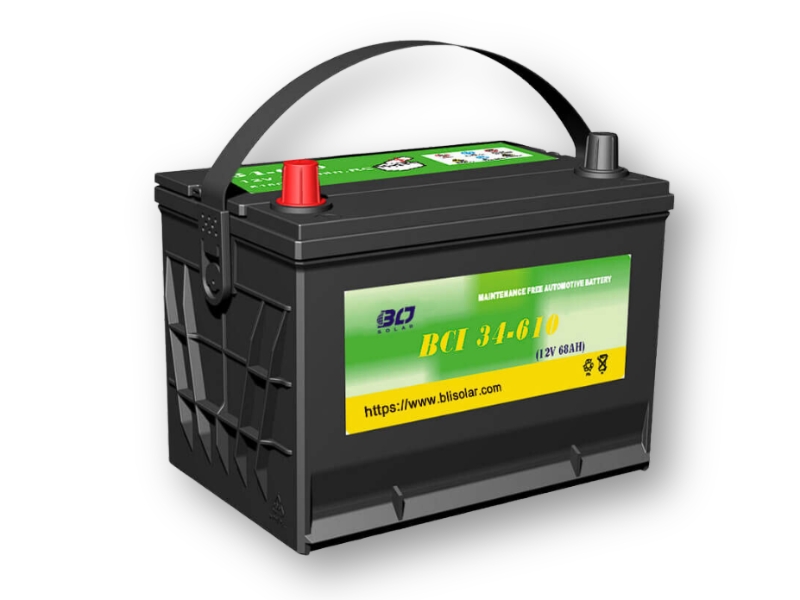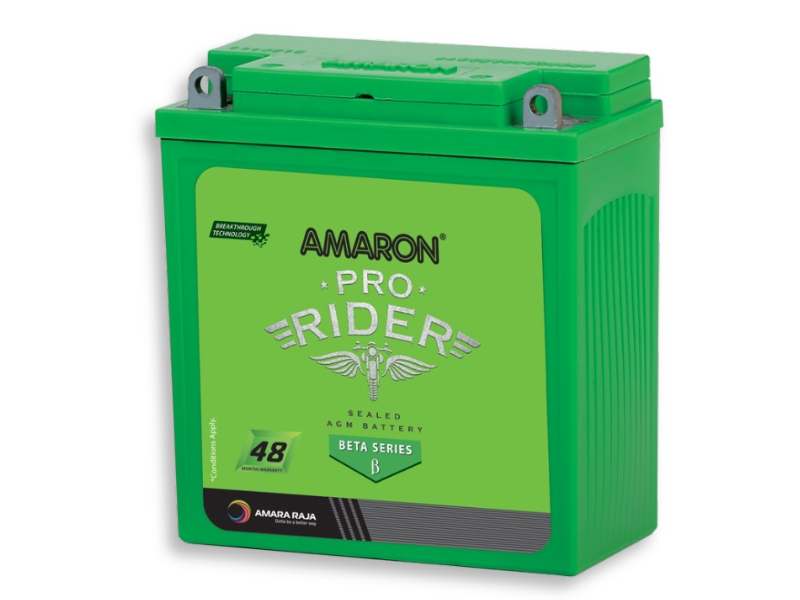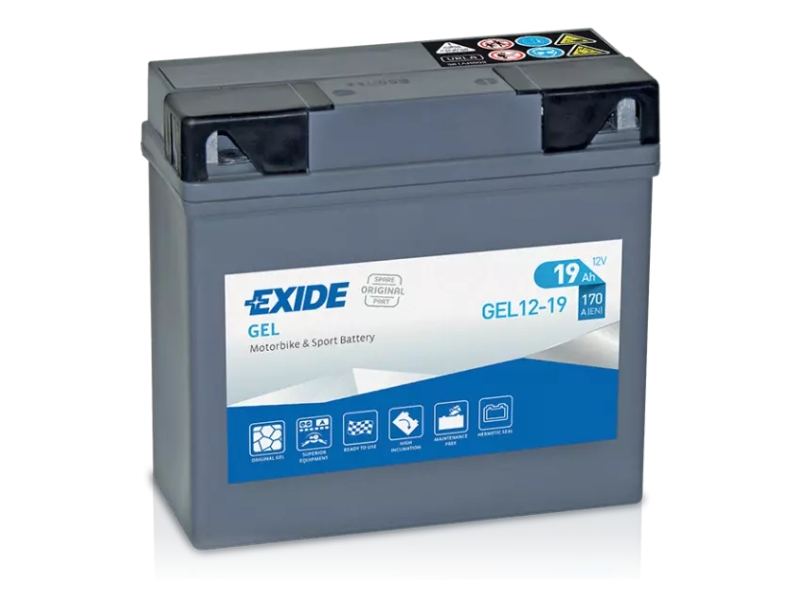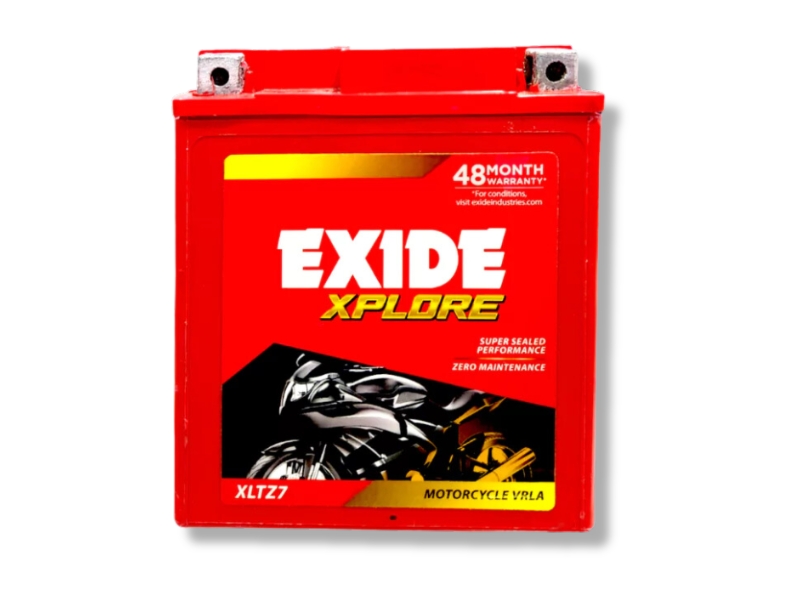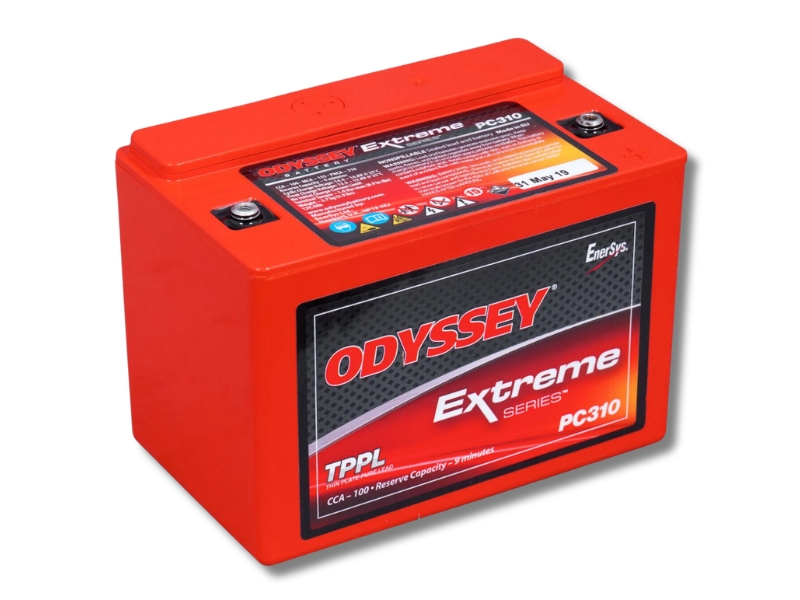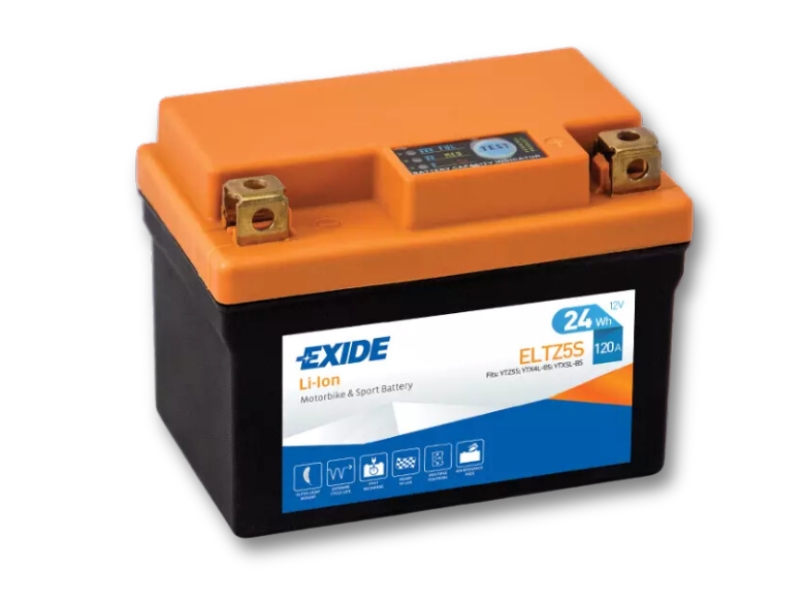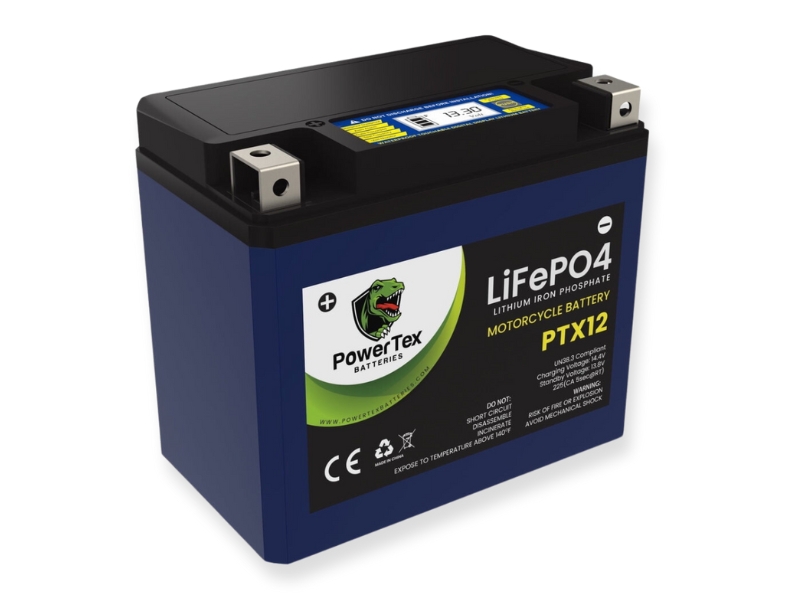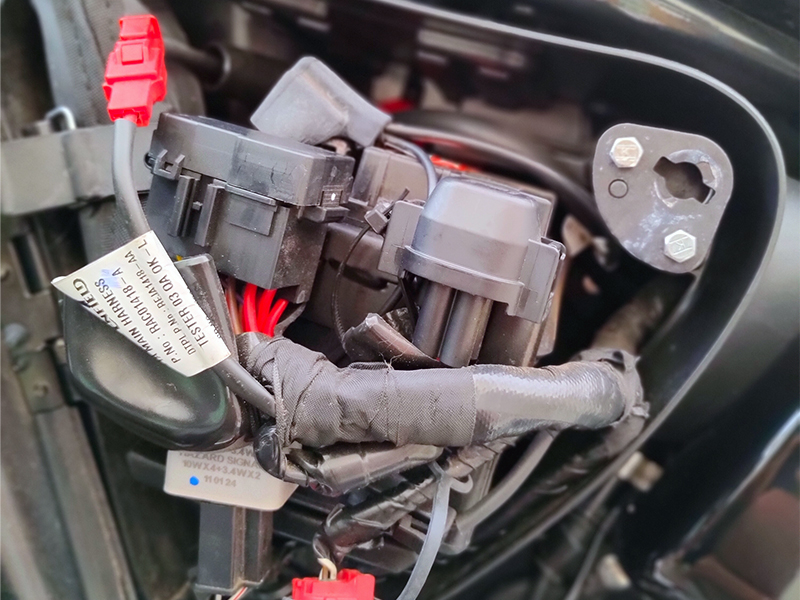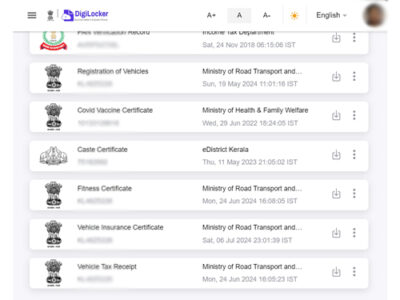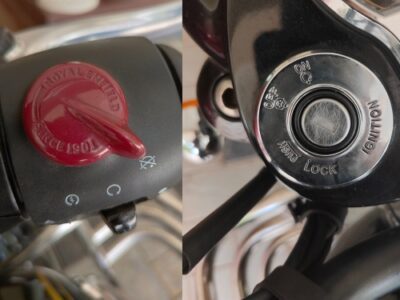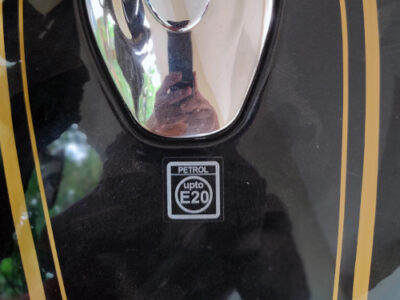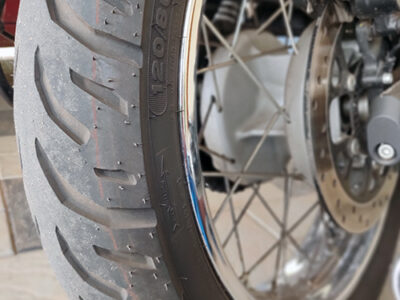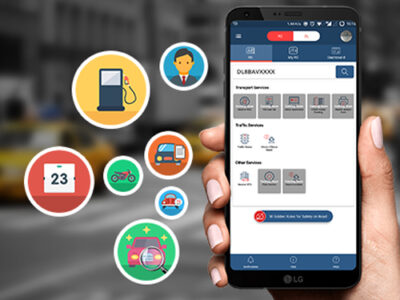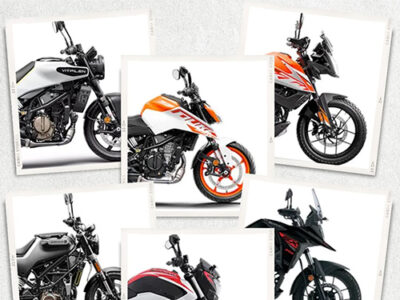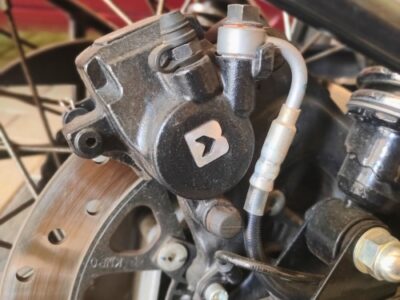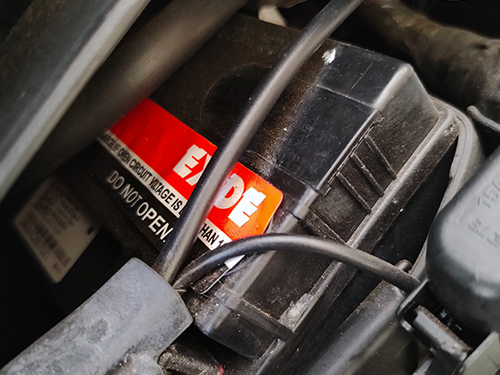
|
Getting your Trinity Audio player ready...
|
Long story short: Your motorcycle battery is a crucial component of your bike. Learn how to maintain motorcycle battery properly and extend its lifespan with these helpful tips. Here we discuss battery types like gel batteries, agm batteries etc.
Gone are the days when we had to kick start every morning instead of using an electric starter for our motorcycle. Technology has moved a long way, and today, most motorcycles are phasing out kick-start features in most models. Why? There is only one reason behind this: the advancement of motorcycle battery technology. There is no issue whatsoever while starting your motorcycle with an electric start in the early morning. For most motorcycle batteries, there won’t be a single issue for the initial three years; you can expect a lifespan of around five years.
But for a battery to work for its entire lifespan, you need to take care and maintain the motorcycle battery regularly to get that extended life. So, in this article, our focus will be on topics like different types of bike batteries, FAQs, and tips on extending your bike battery’s life. So, let’s start our discussion about different types of motorcycle batteries.
Types of motorcycle battery
1. Lead-Acid Batteries
Lead-acid batteries are among the oldest types of rechargeable batteries. They use lead as the anode, lead oxide as the cathode and sulfuric acid as the electrolyte.
1.1 Flooded Lead-Acid Batteries
Flooded Lead-Acid Batteries among motorcycle battery types contain liquid acid and have removable caps for maintenance. They are primarily used in older motorcycles and certain ATVs.
Pros of Flooded Lead-Acid Batteries
- Cost-Effective: Flooded lead-acid batteries are generally more affordable compared to newer technologies like lithium-ion batteries. This makes them an attractive option for budget-conscious consumers.
- Availability: These batteries are widely available across India, making it easy for users to find replacements and services.
- Proven Technology: Having been in use since 1859, flooded lead-acid batteries have a long history of reliability and performance in various applications, including motorcycles.
- High Surge Current: They can provide a high surge current, which is beneficial for starting engines, especially in colder climates.
- Recyclability: Lead-acid batteries are highly recyclable, which is an important consideration for environmentally conscious consumers.
Cons of Flooded Lead-Acid Batteries
- Maintenance Requirements: Flooded lead-acid batteries require regular maintenance, including checking electrolyte levels and topping up with distilled water. This can be cumbersome for users.
- Weight: These batteries are heavier than their lithium counterparts, which can affect the overall weight and handling of the motorcycle.
- Shorter Lifespan: Compared to lithium batteries, flooded lead-acid batteries typically have a shorter lifespan, which may lead to more frequent replacements.
- Vulnerability to Deep Discharge: They are sensitive to deep discharges, which can significantly reduce their lifespan if not managed properly.
- Environmental Concerns: While they are recyclable, improper disposal can lead to environmental hazards due to the lead content.
1.2 Absorbed Glass Mat (AGM) Batteries
AGM batteries are a type of lead-acid battery among motorcycle battery types that is maintenance-free and spill-proof. They offer reliable performance but are more expensive and heavier than lithium batteries. They also have a shorter lifespan.
Pros of AGM Batteries
- Durability: AGM batteries are robust and can withstand harsh conditions, making them reliable for long-term use.
- Maintenance-Free : Once factory-activated, AGM batteries require no upkeep, providing convenience to riders.
- Charge Retention : They retain their charge for extended periods, making them ideal for seasonal riders.
- Vibration Resistance : AGM batteries excel in vibration resistance, which is beneficial for motorcycles.
Cons of AGM Batteries
- Higher Cost : AGM batteries are more expensive than standard lead-acid batteries.
- Overcharging Sensitivity : They are sensitive to overcharging, necessitating a specific charger.
1.3 Gel Batteries
Gel batteries are another type of lead-acid battery among motorcycle battery types that is maintenance-free and spill-proof. They are suitable for deep cycle applications but are more expensive and have limited power output compared to AGM and lithium batteries. They are also sensitive to overcharging.The advanced technology of gel batteries makes them more expensive, but their durability and performance justify the cost in high-demand situations.
Pros of Gel Batteries
- Maintenance-Free: These gel batteries do not require regular maintenance, providing convenience to riders.
- Spill-Proof: The gelified electrolyte prevents leaks and spills, enhancing safety.
- Vibration Resistant: gel batteries can withstand vibrations, making them suitable for rough terrains.
Cons of Gel Batteries
- More Expensive : Gel batteries are generally more expensive than standard lead-acid batteries.
- Voltage Sensitivity : gel batteries are more finicky about the voltage they can be charged at, which can be a drawback.
1.4 Valve Regulated Lead Acid (VRLA) Batteries
VRLA batteries are another type of batteries among motorcycle battery types similar to AGM batteries because they are maintenance-free and spill-proof. They are more expensive than flooded lead-acid batteries and have a shorter lifespan than lithium batteries.
Pros of VRLA Batteries
- Maintenance-Free: One of the most significant advantages of VRLA batteries is that they are maintenance-free. They do not require regular topping up electrolyte levels, making them convenient for users who prefer a hassle-free experience.
- Sealed Design: VRLA batteries are sealed, which means they are less prone to leakage compared to traditional lead-acid batteries. This feature is particularly beneficial in the Indian climate, where high temperatures affect battery performance.
- Vibration Resistance: These batteries are designed to withstand vibrations, making them suitable for motorcycles that often encounter rough terrains.
- Cost-Effective: Generally, VRLA batteries are more affordable than lithium-ion alternatives, making them a budget-friendly option for many motorcycle owners in India.
- Good Performance: VRLA batteries provide reliable starting power and can handle the demands of modern motorcycles equipped with various electronic systems.
Cons of VRLA Batteries
- Weight: VRLA batteries tend to be heavier than lithium-ion batteries, which can affect the overall weight distribution of the motorcycle. This might be a concern for performance-oriented riders.
- Limited Lifespan: While VRLA batteries have a decent lifespan, they typically do not last as long as lithium-ion batteries. Users may find themselves needing to replace them more frequently.
- Temperature Sensitivity: Although they are sealed, VRLA batteries can still be sensitive to extreme temperatures. High heat can lead to reduced performance and lifespan.
- Lower Energy Density: Compared to lithium-ion batteries, VRLA batteries have a lower energy density, meaning they store less energy for the same weight. This can disadvantage riders looking for lightweight solutions with high power output.
- Charging Time: VRLA batteries generally take longer to charge compared to lithium-ion batteries, which can be inconvenient for users who need quick turnaround times.
2. Pure Lead Batteries
These batteries are a type of lead-acid battery among motorcycle battery types that uses pure lead for both the anode and cathode, with sulfuric acid as the electrolyte.
Pros of Pure Lead Batteries
- Long Lifespan: Known for their durability and long service life.
- Reliable Performance: Provide trustworthy performance with minimal risk of leaks and spills.
- Recyclability: Like standard lead-acid batteries, they are highly recyclable.
Cons of Pure Lead Batteries
- Higher Cost: More expensive than standard lead-acid batteries.
- Weight: Heavier than lithium batteries, which can affect motorcycle performance.
- Maintenance: Requires proper handling, installation, and maintenance to ensure safe operation.
3. Lithium Based Batteries
3.1 Lithium-Ion Batteries
Lithium-ion batteries are a type of battery among motorcycle battery types .they are lightweight and offer high power output. They also have a long lifespan and low self-discharge rate, making them ideal for high-performance motorcycles. However, they are expensive, have compatibility issues with older bikes, and can have charging problems. They also perform poorly in cold weather and are at risk of fire and explosion.
Pros of Lithium-Ion Batteries
- Lightweight : Lithium-ion batteries are significantly lighter than their AGM or lead-acid counterparts, enhancing motorcycle performance and fuel efficiency.
- Longer Lifespan : They have a longer operational life, offering better value over time.
- High Power Output : These batteries offer higher cranking amps, making them excellent for high-performance motorcycles.
- Low Self-Discharge Rate : They hold their charge well when not in use, which is perfect for seasonal riders.
- Eco-Friendly : Lithium-ion batteries are more environmentally friendly, containing fewer toxic materials compared to lead-acid batteries.
Cons of Lithium-Ion Batteries
- Higher Cost : Lithium-ion batteries are pricier than other types of batteries.
- Compatibility Issues : Older motorcycles might not be fully compatible with lithium batteries, causing electrical issues.
- Cold Weather Performance : They might fail to hold a charge in cold weather, making them less reliable for riders in colder climates.
- Charging Problems : Lithium batteries often require a specialized charger for optimal performance and safety.
3.2 Lithium Iron Phosphate (LiFePO4) Batteries
These are a type of lithium-ion battery among motorcycle battery types that is lightweight, has high power output, and a long lifespan. They are chemically stable and have a low self-discharge rate. However, they are expensive, incompatible with older bikes, and require special charging systems. They also perform poorly in cold weather.
Pros of Lithium Iron Phosphate Batteries
- Safety : LiFePO4 batteries are known for their thermal and chemical stability, reducing the risk of overheating and fires.
- Performance : They provide reliable performance and have a long lifespan.
- Lightweight : These batteries are up to 70% lighter than AGM batteries, significantly improving motorcycle handling and responsiveness.
- Charge Retention : They maintain their charge effectively over extended periods of inactivity.
Cons of Lithium Iron Phosphate Batteries
- Higher Initial Cost : Similar to other lithium-based batteries, LiFePO4 batteries come with a higher initial cost.
- Specialized Charger Needed : A specialized charger is necessary for optimal performance and safety.
Replacement time & signs of a weak motorcycle battery
1. Slow Engine Crank
If your motorcycle takes longer to start than usual, it could be a sign that the battery is weakening. A slow engine crank indicates the battery is struggling to provide the necessary power to start the engine.
2. Dim Headlights and Failing Horn
Dimming headlights and a weak horn are common signs of a failing battery. These symptoms occur because the battery cannot supply the motorcycle’s electrical components with sufficient power.
3. Battery Warning Light
A battery warning light on your motorcycle dashboard indicates your battery is in trouble. This light is designed to alert you to potential problems before they become severe.
4. Electrical Issues
Experiencing multiple electronic issues, such as malfunctioning indicators, gauges, or other electrical components, can indicate that your battery is failing. These issues arise because the battery is unable to maintain a consistent charge.
5. Swollen or Misshaped Battery Case
A swollen or misshaped battery case is a sign of internal damage, often caused by overheating or overcharging. This deformation indicates that the battery is no longer safe to use and should be replaced immediately.
6. Corrosion on Battery Terminals
Corrosion on the battery terminals can impede the flow of electricity, leading to starting problems and other electrical issues. To prevent corrosion, regularly inspect and clean the terminals. Still, if the corrosion is severe, it may be time to replace the battery.
7. Battery Age
The age of your battery is a significant factor in its performance. Most motorcycle batteries last between two to five years. Suppose your battery is older than three years. In that case, it is advisable to have it inspected and consider replacing it to avoid unexpected failures.
8. Inconsistent Multimeter Readings
Using a multimeter to check the battery’s voltage can help identify issues. Suppose the readings are inconsistent or below 12 volts. In that case, the battery is not holding a charge properly and may need replacement.
9. Frequent Jump Starts
Frequently needing to jumpstart your motorcycle indicates that the battery can no longer charge. If not addressed promptly, this issue can lead to more significant problems.
10. Battery Fluid Leaks and Rotten Smell
Leaks of battery fluid and a rotten smell are severe indicators of a failing battery. These symptoms suggest internal damage and chemical reactions that compromise the battery’s integrity, necessitating immediate replacement.
11. Difficulty Starting in Cold Weather
Reduced performance in cold weather is another sign of a weak battery. Cold temperatures can exacerbate existing issues, making it harder for the battery to provide the necessary power to start the engine.
12. Battery Self-Discharges Quickly
If your battery discharges quickly even when not in use, it has lost its ability to store charge effectively. This issue often means the battery is nearing the end of its life.
How to extend the life of a motorcycle battery?
1. Proper Installation
Ensuring that the battery is correctly installed on your motorcycle is fundamental. Improper installation can lead to poor connections and potential battery and electrical system damage.
2. Check all battery connections regularly
Have a periodic check for battery connections and faulty wires. Along with that, check the condition of all wires. If left unchecked, it can cause damage to other electrical components in your bike.
3. Regular motorcycle usage or charging
Proper battery maintenance is essential for motorcycles. Regular charging or riding helps maintain the battery’s capacity and prevents it from discharging completely, which can shorten its lifespan.
4. Disconnect the battery when not used for a long time
Disconnect the battery if you aren’t using your two-wheeler for a prolonged time. Disconnecting the battery will prevent power loss and hence extend the battery life. Make sure to store the battery in a dry and warm place.
5. Don’t overload the battery, especially on idle
The accessories you attach to your two-wheeler, like high-capacity lights and LEDs, put a lot of load on the battery. Overloading can cause the battery to draw power and eventually die. Therefore, it’s essential to ensure that your accessories are within the battery’s limit and don’t overload it. Running additional electrical accessories while your motorcycle is idling can strain the battery.
6. Don’t harshly use the electric start
Always use the electric start nicely and smoothly instead of harshly, like pressing the electric start for several seconds when it is not starting. Always have some time gap between electric starts so the battery has less load.
7. Clean the battery terminals regularly
Every battery is made up of two electrical terminals: negative and positive. Some calcium, carbon, and rust get deposited around these terminals over time. Suppose you need to clean the terminals correctly. In that case, it will result in poor performance and improper operation of the various electrical components such as headlights, horns, etc.
8. Check the battery fuse regularly
A simple and inexpensive fuse can help prevent your battery from sustaining severe and permanent damage. So check it regularly.
9. Correct Jumpstarting
Jumpstarting a motorcycle can be convenient, but if not done correctly, it can damage the battery. To avoid potential battery harm, it is essential to follow the correct procedure.
10. Avoid Using Old Batteries
Using old or expired batteries can negatively impact their performance and overall lifespan. Replacing old batteries with new ones is essential to ensure optimal performance.
FAQ about how to maintain motorcycle battery
1. How often should I check my motorcycle battery?
It would help to visually inspect your motorcycle battery at least once every three months. Regular inspections help identify potential issues early, such as loose connections or corrosion, which can prevent starting problems and extend the battery’s life.
2. What should I do if my motorcycle is not in use for a long period?
Suppose you plan not to use your motorcycle for an extended period. In that case, starting the vehicle every 3-4 days and letting the engine run for 5-10 minutes is essential. This practice helps maintain the battery charge and prevents it from losing power. Additionally, ensure the battery is fully charged before storing it, as a fully charged battery has a longer life and is less likely to freeze during cold weather.
3. How can I maintain the electrolyte levels in my battery?
Regularly check the electrolyte levels for conventional motorcycle batteries and top them up with distilled or deionized water if they are below the suggested markers. Avoid using tap water as it contains minerals that can harm the battery.
4. What are the best practices for cleaning battery terminals?
Battery terminals can accumulate dust, grime, and sulphate deposits over time, leading to corrosion and oxidation. Clean the terminals and connectors regularly to prevent these issues. Use baking soda and water to clean the terminals and dry them before reconnecting.
5. How should I store my motorcycle battery?
If you need to remove the battery from your bike, store it on a wood or other non-conductive surface. Storing the battery on concrete or metal surfaces can cause it to discharge over time. Also, ensure the storage area is dry and cool to prevent any damage to the battery.
6. What should I do if my battery is not holding a charge?
If your battery is not holding a charge, check for loose connections, clogged exhaust tubes, or other issues that might be causing the problem. Recharge the battery if the lights dim, the starter sounds weak, or it hasn’t been used in over two weeks. If the battery becomes hot during charging, stop immediately and allow it to cool before continuing.
7. Can I use any battery for my motorcycle?
Always choose a battery that suits your motorcycle’s equipment type and output requirements. Refer to the owner’s manual to ensure compatibility before charging and installing a new battery. Using the wrong type of battery can lead to performance issues and potential damage.
8. What are maintenance-free batteries, and should I consider them?
Maintenance-free batteries are a newer and more reliable alternative to traditional low-maintenance batteries. They require less frequent maintenance and are designed to last longer, making them a good option for convenience and reliability.
9. What precautions should I take while charging my battery?
When connecting the battery to a charger, ensure the positive charger lead is connected to the positive battery post and the negative charger lead to the negative battery post. Unplug the charger or turn it off before disconnecting the leads to prevent sparks.
10. What are the benefits of using lithium-ion motorcycle batteries?
Lithium-ion batteries are lighter, have a higher energy density, and offer faster charging times than other types. They also perform well at high temperatures and have a longer lifespan, making them a popular choice for modern motorcycles.
11. How do lead-acid batteries compare to other types of motorcycle batteries?
Lead-acid batteries are the most affordable and commonly used type of motorcycle battery. They are reliable and work well in varying temperatures. However, they require regular maintenance, such as topping up the electrolyte levels. They also have a shorter lifespan compared to lithium-ion and other advanced batteries.
12. What are AGM batteries, and why are they popular?
AGM (Absorbed Glass Mat) batteries are lead-acid batteries that use glass mat separators to increase durability and resistance to vibration. They are maintenance-free, spill-proof, and have a longer lifespan than traditional lead-acid batteries, making them a popular choice for motorcycles.
13. What are gel cell batteries, and what are their advantages?
Gel cell batteries use an electrolyte converted into a gel, making them spill-proof and maintenance-free. They perform well in extreme temperatures, resist mechanical damage, and are suitable for driving on rough terrains. These features make them a reliable option among motorcycle battery types.
14. What factors should be considered when choosing a motorcycle battery?
When selecting a motorcycle battery type, consider the power rating, compatibility with your motorcycle, size, maintenance requirements, and warranty. It is important to choose a battery that meets your motorcycle’s specific needs and offers reliable performance.
Other useful links for motorcycle battery
Other related articles from Bikeleague India
- Motorcycle headlight in India – Everything you need to know
- How to properly maintain your motorcycle fuel tank
- Mileage in Two wheelers – Proven & useful tips
- Evolet
- Ola
Conclusion
We have discussed in detail the different types of motorcycle batteries like gel batteries,agm batteries etc, battery care tips, and some FAQs about how to maintain motorcycle batteries. We have yet to cover the technical aspects, like battery working, jumpstarting, etc.; we will leave that for another article.
If you have any other doubts or queries about bike fancy number booking, email us at bikeleague2017@gmail.com. You can also share your doubts or opinions in the comments section below. We are always eager to help and assist you. Also, here are several social media platforms of Bikeleague India to raise your suspicions.

